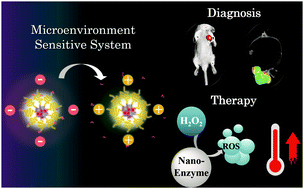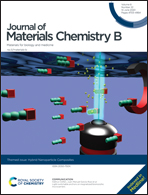pH-Sensitive nanotheranostics for dual-modality imaging guided nanoenzyme catalysis therapy and phototherapy†
Abstract
Triple-negative breast cancer shows resistance to conventional radiotherapies and chemotherapies, and few molecular targeted therapies are currently available for this malignancy in clinical settings. In this work, a theranostic nanosystem with a core–shell structure was synthesized through self-assembly of amphiphilic macromolecules, which can be used in effective catalysis therapy and phototherapy. Herein, we report that superparamagnetic iron oxide nanocrystals and IR780 dye were effectively loaded into the hydrophobic core of the nanosystem, which enabled dual-modality magnetic resonance imaging and near-infrared fluorescence imaging. Furthermore, on the hydrophilic crown, the neighboring carboxylic acid-based amide linkage showed charge conversion properties in the tumor acidic microenvironment and endowed the system with targeted diagnosis and delivery. Upon light excitation, this theranostic system exerted synergistic anti-cancer activity through the nano-enzyme catalysis effect enhanced phototherapy in a triple-negative 4T1 breast cancer model. Furthermore, there were no obvious side-effects. The results of our study demonstrate the great potential of this theranostic nanosystem in cancer diagnosis and therapy.

- This article is part of the themed collection: Hybrid Nanoparticle Composites


 Please wait while we load your content...
Please wait while we load your content...